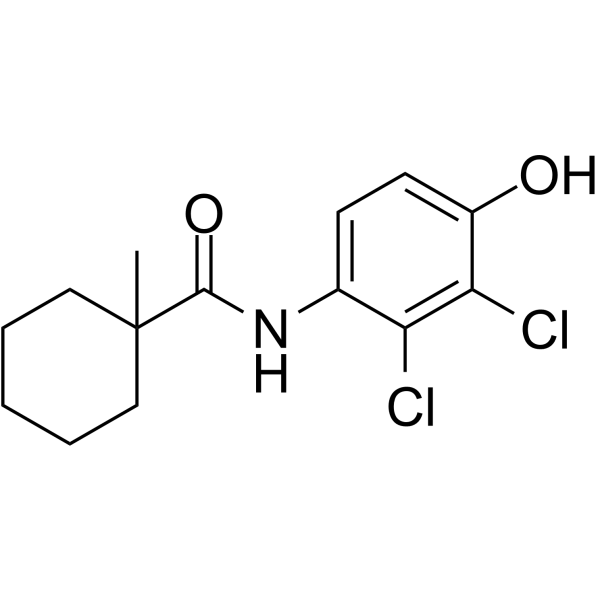
Fenhexamid
CAS No. 126833-17-8
Fenhexamid( KBR 2738 )
Catalog No. M27240 CAS No. 126833-17-8
Fenhexamid, a sterol biosynthesis inhibitor, shows antifungal activity against the plant pathogenic fungus. Fenhexamid is used for agriculture and is present in measurable amounts in fruits and vegetables.
Purity : >98% (HPLC)
 COA
COA
 Datasheet
Datasheet
 HNMR
HNMR
 HPLC
HPLC
 MSDS
MSDS
 Handing Instructions
Handing Instructions
| Size | Price / USD | Stock | Quantity |
| 50MG | 46 | In Stock |


|
| 100MG | 80 | In Stock |


|
| 200MG | Get Quote | In Stock |


|
| 500MG | Get Quote | In Stock |


|
| 1G | Get Quote | In Stock |


|
Biological Information
-
Product NameFenhexamid
-
NoteResearch use only, not for human use.
-
Brief DescriptionFenhexamid, a sterol biosynthesis inhibitor, shows antifungal activity against the plant pathogenic fungus. Fenhexamid is used for agriculture and is present in measurable amounts in fruits and vegetables.
-
DescriptionFenhexamid, a sterol biosynthesis inhibitor, shows antifungal activity against the plant pathogenic fungus. Fenhexamid is used for agriculture and is present in measurable amounts in fruits and vegetables.
-
In Vitro——
-
In Vivo——
-
SynonymsKBR 2738
-
PathwayGPCR/G Protein
-
TargetAntibacterial
-
RecptorBeta-secretase| Voltage-gated sodium channel
-
Research Area——
-
Indication——
Chemical Information
-
CAS Number126833-17-8
-
Formula Weight302.2
-
Molecular FormulaC14H17Cl2NO2
-
Purity>98% (HPLC)
-
SolubilityIn Vitro:?DMSO : 100 mg/mL (330.91 mM)
-
SMILESCC1(CCCCC1)C(=O)Nc1ccc(O)c(Cl)c1Cl
-
Chemical Name——
Shipping & Storage Information
-
Storage(-20℃)
-
ShippingWith Ice Pack
-
Stability≥ 2 years
Reference
1.Finelli E, et al. Patch testing in a case of eslicarbazepine and carbamazepine induced cutaneous reaction. Eur Ann Allergy Clin Immunol. 2018 Sep;50(5):229-231.
molnova catalog



related products
-
Metallo β-lactamase ...
Metallo β-lactamase ligand 1 is an inhibitor of class B β-lactamase exhibiting antibacterial activities.
-
RNPA1000
RNPA1000 is a potent, specific small molecule inhibitor of S. aureus RnpA RNA degradation activity (IC50=100-125 uM).
-
SIG1459
SIG1459 (SIG-1459) is a novel anti-acne isoprenylcysteine (IPC) small molecule that shows direct antibacterial activity and inhibits TLR2 inflammatory signaling.



 Cart
Cart
 sales@molnova.com
sales@molnova.com


